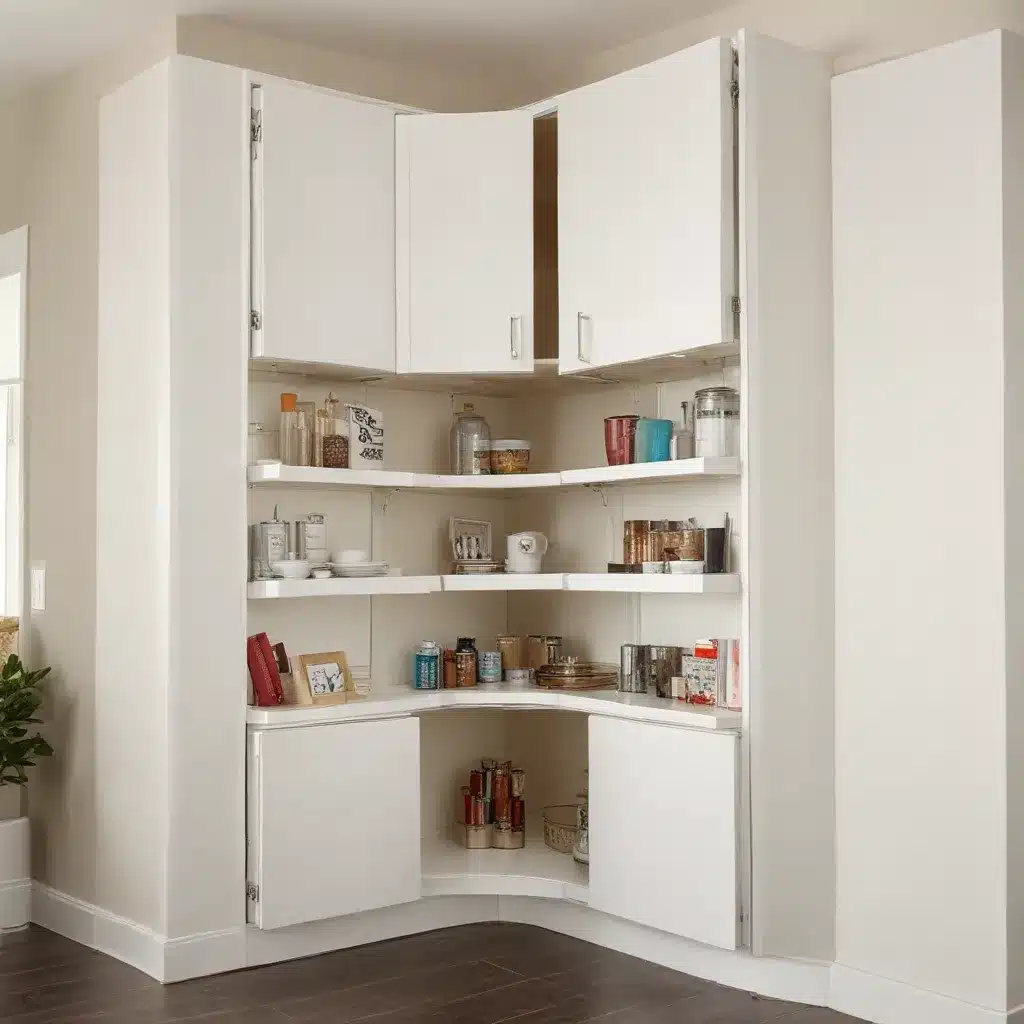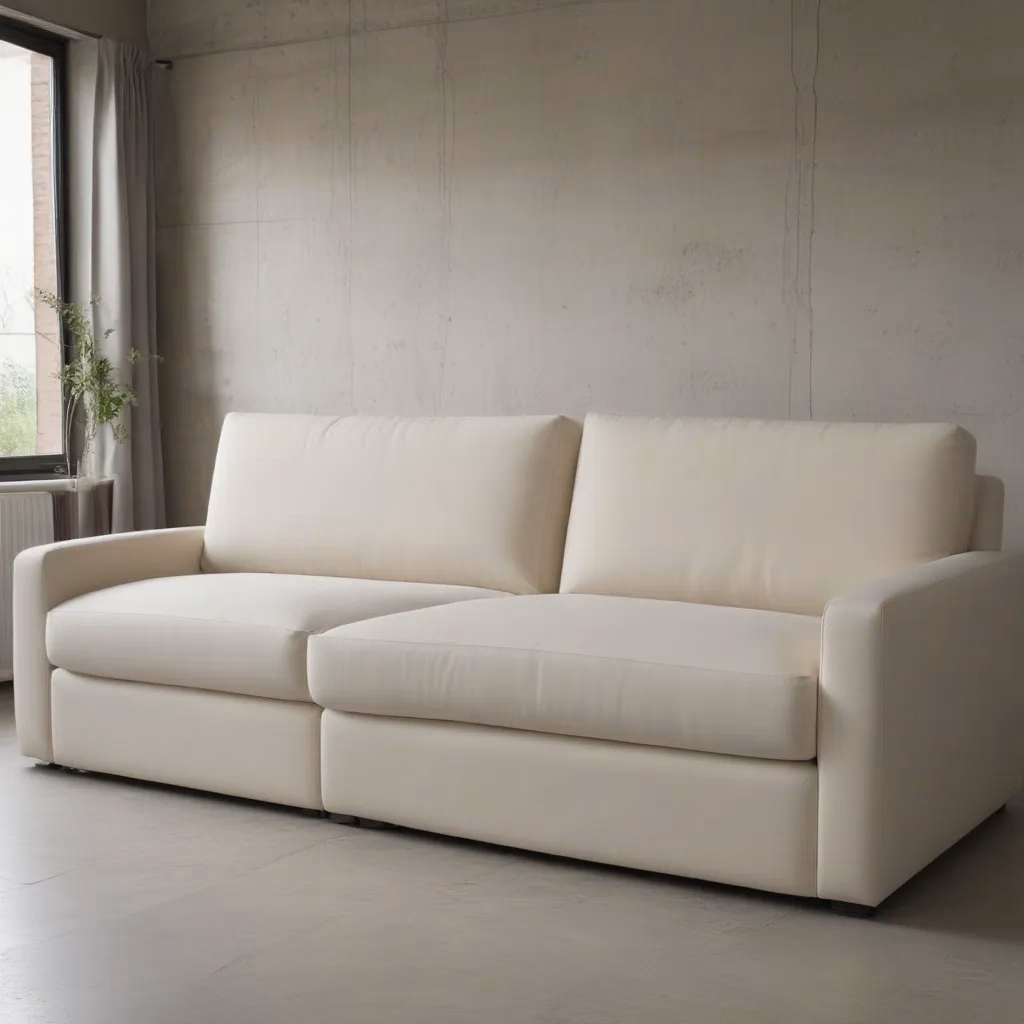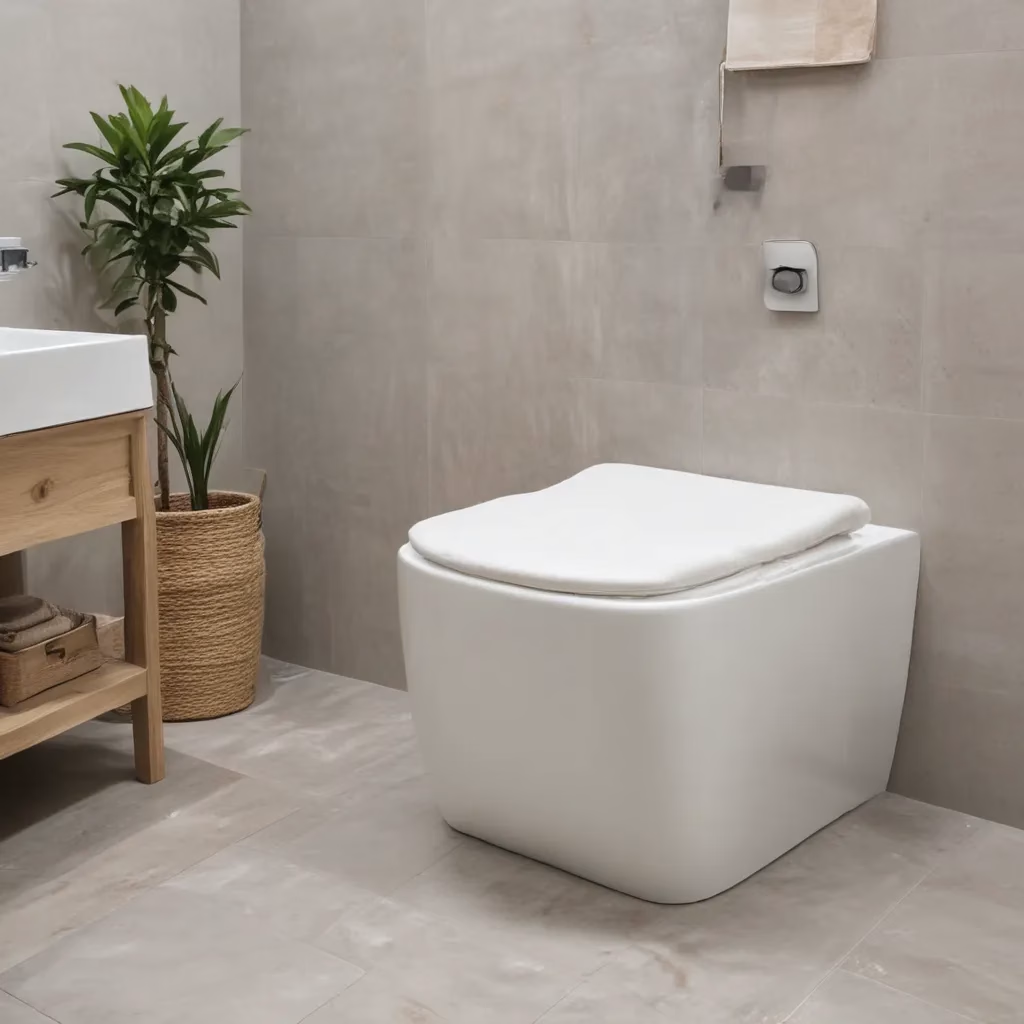
Introduction to Space-Saving Furniture Solutions
In the ever-evolving world of interior design, particularly in the UK where living spaces can often be at a premium, innovative storage solutions have become increasingly important. Among these, rotating corner cabinets have emerged as a smart and stylish option for homeowners looking to make the most of every square inch. These clever pieces of furniture are designed to fit snugly into corner spaces, traditionally underutilized areas in many rooms, and offer a rotating mechanism that allows for easy access to all contents.
The concept of rotating storage is not entirely new, but its application in corner cabinets has gained significant traction in recent years. This surge in popularity can be attributed to the growing need for efficient space utilization in urban dwellings, as well as an increased focus on functional yet aesthetically pleasing home decor. As we look at the landscape of furniture design in 2024, it’s clear that these rotating corner cabinets are more than just a passing trend—they represent a shift towards smarter, more adaptable living spaces.
For those unfamiliar with the concept, a rotating corner cabinet typically consists of a series of shelves or compartments arranged around a central axis. This axis allows the entire unit to spin, bringing different sections of storage to the front for easy access. The design not only maximizes corner space but also eliminates the need to reach awkwardly into deep, static cabinets, making it an ergonomic choice for users of all ages.
The Benefits of Rotating Corner Cabinets
Maximizing Space Efficiency
One of the primary advantages of rotating corner cabinets is their ability to maximize space efficiency. Traditional corner cabinets often leave dead space due to their awkward angles and difficult-to-reach depths. Rotating cabinets, however, make use of every inch of corner space, providing a significantly larger storage capacity than their static counterparts.
In kitchens, these cabinets can house everything from pots and pans to small appliances and dry goods. In living rooms or home offices, they can store books, electronics, or decorative items. The versatility of these units means they can be adapted to suit almost any room and storage need, making them a valuable addition to homes where space is at a premium.
Moreover, by making better use of corner spaces, rotating cabinets can free up wall space elsewhere in the room. This additional space can then be used for other purposes, such as creating a more open floor plan or accommodating larger pieces of furniture.
Enhancing Accessibility
Accessibility is another key benefit of rotating corner cabinets. Traditional corner cabinets often require users to bend, stretch, or even crawl to reach items stored at the back. This can be particularly challenging for older individuals or those with mobility issues. Rotating cabinets eliminate this problem by bringing all items to the front with a simple turn.
This enhanced accessibility not only makes daily tasks easier but also encourages better organization. When all items are easily visible and reachable, users are more likely to maintain an orderly system, reducing clutter and making the most of the available storage space.
Streamlining Kitchen Workflows
In kitchen settings, rotating corner cabinets can significantly improve workflow efficiency. By storing frequently used items in these easily accessible units, cooks can reduce the time and effort spent searching for and retrieving utensils, ingredients, or appliances. This streamlined process can make meal preparation faster and more enjoyable, especially in busy households.
Design and Aesthetic Considerations
Integrating with Existing Decor
While functionality is a crucial aspect of rotating corner cabinets, their aesthetic appeal should not be overlooked. These units can be designed to complement a wide range of interior styles, from traditional to ultra-modern. Manufacturers now offer a variety of finishes, materials, and hardware options to ensure that these practical storage solutions can also serve as attractive additions to any room.
For those with traditional decor, wooden cabinets with classic finishes and hardware can blend seamlessly with existing furnishings. In more contemporary settings, sleek designs featuring glass, metal, or high-gloss surfaces can add a touch of modernity while maintaining functionality.
Customization Options
The ability to customize rotating corner cabinets is another factor contributing to their popularity. Many manufacturers offer modular systems that allow homeowners to configure the internal layout to suit their specific needs. This might include adjustable shelves, built-in organizers, or even specialized compartments for particular items like spice racks or wine storage.
Some designs also incorporate lighting elements, such as LED strips that illuminate the contents when the cabinet is opened or rotated. This not only adds a touch of sophistication but also improves visibility and ease of use.
Practical Considerations for Installation and Use
Space Requirements
Before deciding to install a rotating corner cabinet, it’s important to carefully measure the available space. These units require a specific amount of clearance to function properly, both in terms of the corner space itself and the area needed for the door to open and the contents to rotate.
Typically, a minimum of 90 cm of clearance on each wall adjoining the corner is necessary for a standard-sized rotating cabinet. However, this can vary depending on the specific model and design. It’s crucial to consult with a professional or refer to detailed product specifications to ensure that the chosen cabinet will fit and function correctly in the intended space.
Weight Considerations
Another practical aspect to consider is the weight capacity of rotating corner cabinets. While these units are designed to be sturdy, they do have limits on how much weight they can safely hold and rotate. Overloading the shelves can lead to damage to the mechanism or even safety hazards.
Most rotating cabinets are designed to handle typical household items without issue. However, if you plan to store particularly heavy items, it’s wise to check the weight specifications and distribute the load evenly across the shelves.
Maintenance and Durability
To ensure longevity and smooth operation, rotating corner cabinets require some basic maintenance. Regular cleaning of the shelves and the rotation mechanism can prevent the buildup of dust and debris that might impede movement. Additionally, periodically checking and tightening any loose screws or fittings can help maintain the cabinet’s stability and functionality.
When choosing a rotating corner cabinet, look for models with high-quality construction and durable materials. While these may come at a higher initial cost, they often prove more cost-effective in the long run due to their longevity and reduced need for repairs or replacements.
Comparing Rotating Cabinets to Traditional Storage Solutions
To better understand the advantages of rotating corner cabinets, it’s helpful to compare them directly with traditional storage options. The following table outlines key differences:
| Feature | Rotating Corner Cabinet | Traditional Corner Cabinet |
|---|---|---|
| Space Utilization | Maximizes corner space, including hard-to-reach areas | Often leaves dead space in corners |
| Accessibility | All contents easily accessible with a simple rotation | Back areas can be difficult to reach |
| Organization | Encourages better organization due to visibility | Items at the back often forgotten or unused |
| Ergonomics | Reduces need for bending and stretching | May require awkward positions to access all areas |
| Customization | Often highly customizable with modular designs | Usually fixed layout with limited customization |
| Cost | Generally higher initial investment | Typically less expensive upfront |
| Installation | May require professional installation | Often simpler to install |
| Maintenance | Requires occasional maintenance of rotating mechanism | Minimal maintenance needed |
This comparison highlights the trade-offs between the two options. While rotating cabinets offer superior space utilization and accessibility, they do come with a higher initial cost and may require more careful consideration during installation and use.
Innovative Applications Beyond the Kitchen
While rotating corner cabinets are commonly associated with kitchen storage, their versatility extends far beyond this single room. Creative homeowners and designers are finding innovative ways to incorporate these space-saving solutions throughout the house.
Home Office Solutions
In home offices, rotating corner cabinets can serve as excellent storage for documents, supplies, and equipment. With the rise of remote work, many people are seeking ways to create functional workspaces in limited areas. A rotating cabinet can house a printer, paper supplies, and files, keeping them easily accessible yet out of sight when not in use. This can help maintain a clutter-free workspace, which is crucial for productivity and professionalism, especially during video calls.
Bathroom Storage
Bathrooms, often one of the smaller rooms in a home, can benefit greatly from the space-saving properties of rotating cabinets. Installed in a corner, these units can store toiletries, towels, and cleaning supplies efficiently. The rotating feature is particularly useful in bathrooms, where reaching into deep cabinets can be challenging due to fixtures like sinks or toilets obstructing access.
Children’s Rooms
In children’s bedrooms or playrooms, rotating corner cabinets offer a fun and practical storage solution. They can be used to store toys, books, and art supplies, making tidying up an engaging activity for children. The ease of access can also promote independence, allowing children to retrieve and put away their belongings without adult assistance.
Living Room Entertainment Centers
Rotating cabinets can be adapted to create unique entertainment centers in living rooms. A corner unit could house audio-visual equipment, gaming consoles, and media collections, with the rotating feature allowing easy access to connections and cables when needed, while keeping them hidden from view during day-to-day use.
Environmental and Sustainability Aspects
As sustainability becomes an increasingly important consideration in home design, it’s worth examining the environmental implications of rotating corner cabinets.
Material Choices
Many manufacturers are now offering rotating cabinets made from sustainable materials. This includes responsibly sourced wood, recycled metals, and eco-friendly composites. When choosing a cabinet, look for certifications such as FSC (Forest Stewardship Council) for wood products or those made with a high percentage of recycled content.
Longevity and Waste Reduction
The durability and versatility of well-made rotating cabinets can contribute to waste reduction. By providing efficient storage that adapts to changing needs, these cabinets can reduce the likelihood of frequent furniture replacement. This longevity not only saves resources but also reduces the amount of furniture ending up in landfills.
Energy Efficiency in Production
Some manufacturers are focusing on energy-efficient production methods for these cabinets. This includes using renewable energy sources in factories, optimizing transportation logistics, and implementing lean manufacturing processes to reduce waste.
The Future of Rotating Corner Cabinets
As we look to the future, it’s clear that rotating corner cabinets will continue to evolve, incorporating new technologies and design innovations.
Smart Home Integration
One exciting development is the integration of rotating cabinets with smart home systems. Imagine a cabinet that can be rotated via voice command or smartphone app, or one that tracks its contents and can remind you when supplies are running low. While these features are still in the early stages, they represent the potential for these cabinets to become even more functional and integrated into our daily lives.
Advanced Materials
Research into new materials could lead to even more durable and lightweight rotating mechanisms. This could expand the possibilities for larger units or those capable of handling heavier loads, further increasing their utility in various settings.
Modular and Adaptable Designs
Future designs may focus even more on modularity and adaptability. This could include cabinets that can be easily reconfigured to suit changing needs, or those that can be expanded or reduced in size as required. Such flexibility would make these units even more attractive for those living in dynamic urban environments where living situations frequently change.
Conclusion
Rotating corner cabinets represent a smart solution to the perennial challenge of maximizing space in our homes. By combining functionality with style, these innovative pieces of furniture offer a way to make the most of often-underutilized corner spaces. Their benefits extend beyond mere storage, influencing the way we interact with our living spaces and potentially improving our daily routines.
As urban living continues to trend towards smaller, more efficient spaces, solutions like rotating corner cabinets will likely become increasingly popular. Their ability to adapt to various rooms and purposes makes them a versatile choice for homeowners looking to optimize their living areas without compromising on style or functionality.
While they may require a higher initial investment compared to traditional storage options, the long-term benefits in terms of space efficiency, accessibility, and organization can make rotating corner cabinets a worthwhile addition to many homes. As with any significant home improvement decision, careful consideration of individual needs, space constraints, and budget is essential.
For those interested in exploring furniture options that combine practicality with modern design, websites like Sofa Spectacular offer a range of contemporary furniture solutions that complement innovative storage ideas like rotating corner cabinets. By thoughtfully integrating such space-saving furniture into our homes, we can create living environments that are not only more functional but also more enjoyable to live in.
As we continue to seek ways to live more efficiently and sustainably, innovations like rotating corner cabinets remind us that sometimes, the most impactful solutions come from rethinking the spaces we often overlook. By turning our attention to these overlooked corners, we open up a world of possibilities for smarter, more organized living.



